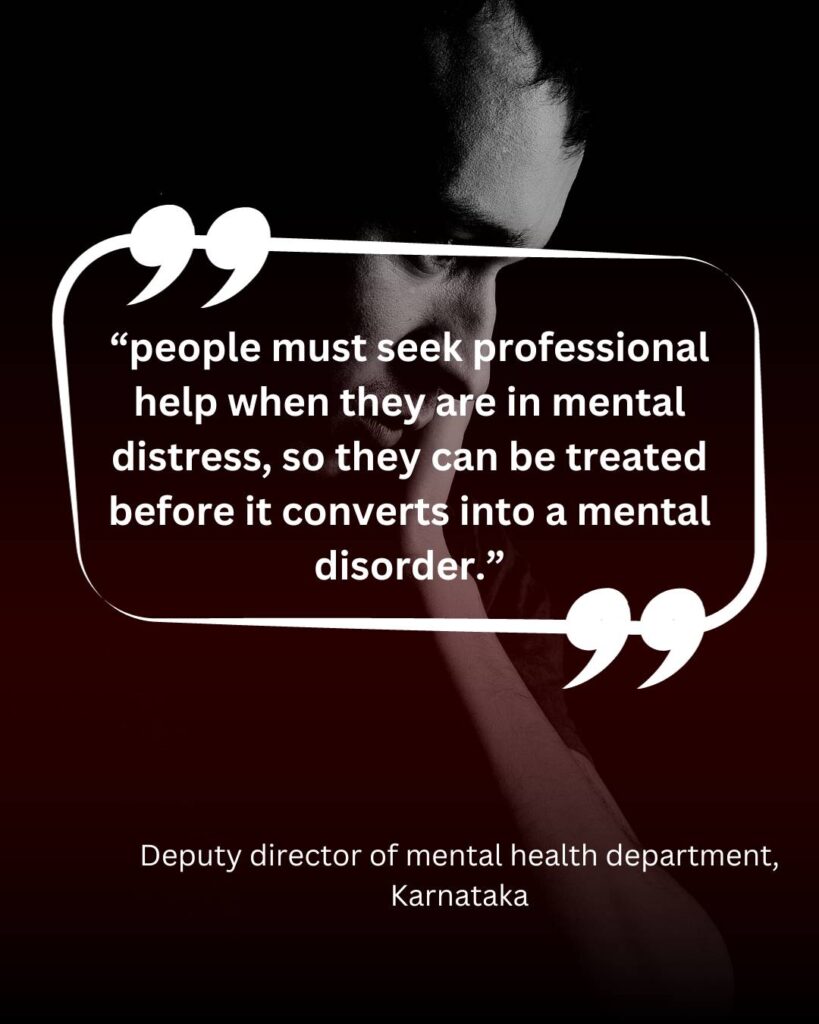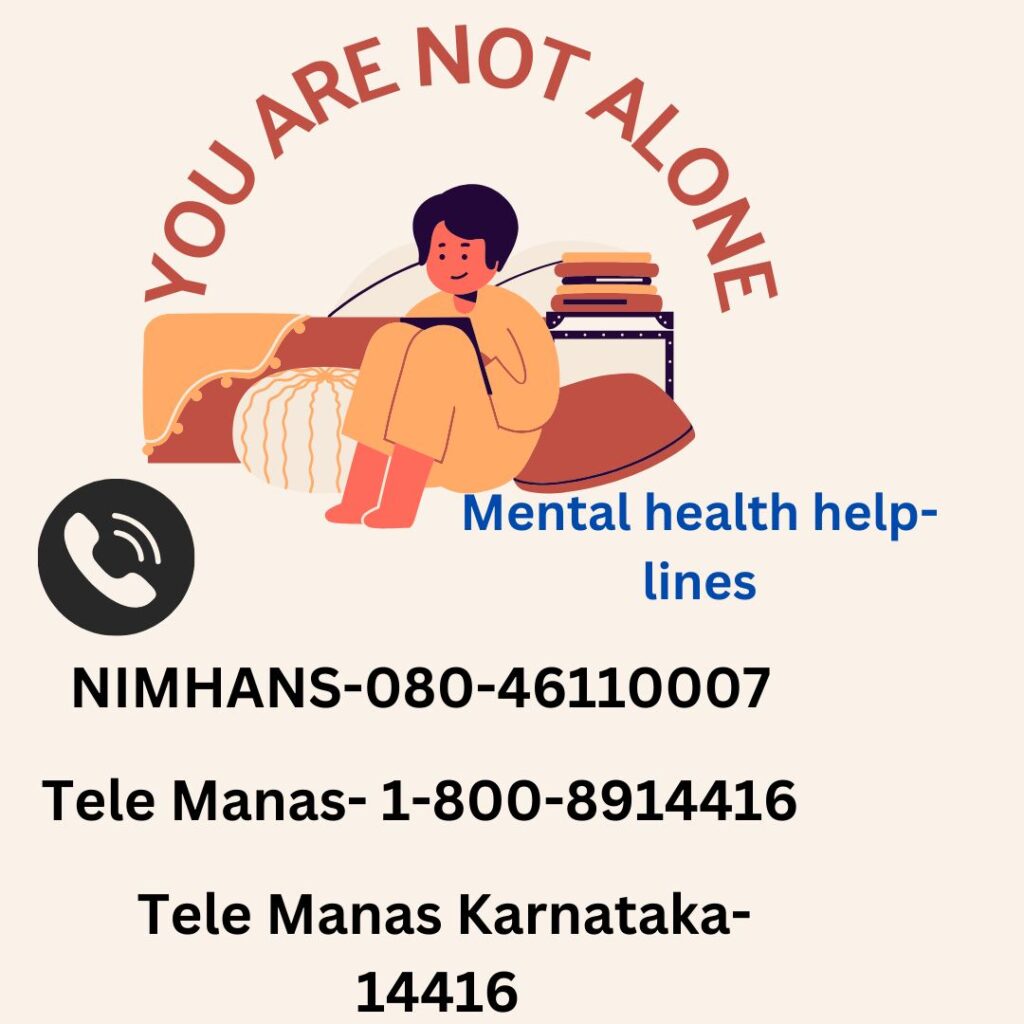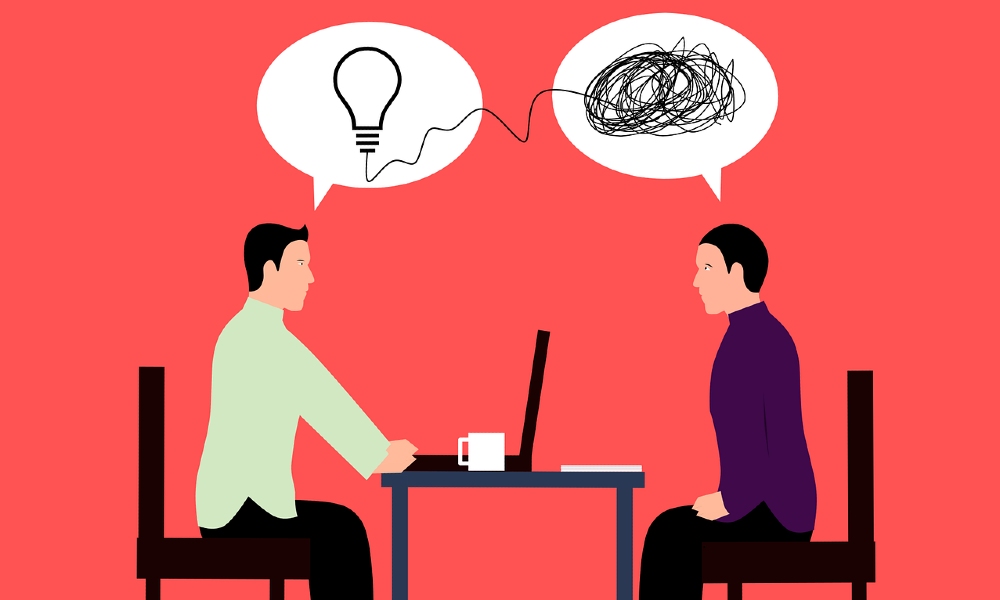With more than 35,000 cases reported, Bangalore Urban had the most number of mental health disorder cases in Karnataka last year.
Bangalore Urban reported ten times more mental health cases than Bangalore Rural according to a report by the Ministry of Health and Family Welfare. The former reported 17,672 cases of common mental disorders (CMD) while Bangalore Rural reported 1,856 such cases.
The most number of mental health related cases were reported in the common mental health cases category. According to National Library of Medicine, “common mental disorders are a group of distress states manifesting with anxiety, depressive and unexplained somatic symptoms.”
The latest report by NCRB, shows that every year more than 1,00,000 people commit suicide in the country. The latest data as available for 2021 shows a 7.2 percent increase over 2020.
Bangalore Urban had 558 suicide attempt cases were reported whereas in Bangalore Rural, six cases were officially reported.
A Lancet report says “While India’s suicide rate of 14.04 per lakh population in 2019 puts it at 49th rank globally, the grim reality of the highest numbers of suicides being reported annually from India cannot be overlooked.”
Survivors of mental health disorders say that the constant work pressure, social media and the hustle of urban lifestyle has affected them mentally.
Sunishtha, a mental health survivor said, “When I started my job after college in 2019, sitting in my office, I would feel very suffocated. I would feel insecure about not ticking boxes of achievements. I would judge myself but didn’t know what to do about it.”
Dr. Rajani, deputy director of Mental Health Department, Karnataka, said, “The fact is that only 20 percent of mental health patients seek help and there is discrimination when it comes to seeking mental health. Only one percent of severe mental health cases’ patients seek professional help while 10.6 percent patients of common mental health disorders do so. It gets worse with the treatment gap, which could be as high as 80 percent.”
Explaining that there is not just one category of mental disorders, Dr. Rajani said that in ‘endogenous depression’ there is no reason for people to be depressed but it happens to them.
SrivalliKasibhatta, a working professional explaining her experience with mental health said, “I didn’t feel like life was worth living and I had no reason to think that! I was doing good in all aspects of life but there was a void that just kept getting bigger and bigger. There came a point when I had to quit my job for one year and just be with myself. I started therapy and even consulted a psychiatrist and took medicines for my general anxiety disorder and it did help.”
Urban lifestyle and mental health
Incidence of severe mental health cases in India shows a concerning trend. The difference in numbers between urban and rural areas is visibly large.
Bangalore Urban reported 6,943 cases of severe mental health disorders while Bangalore Rural had 767 such cases.
Dr. Surya Prasad, a psychiatrist in Bangalore said, “Population influx in urban areas, struggle with work-life balance, low social and self-management skills are majorly responsible for an initial trigger. Unfortunately, no coping mechanisms for these problems are taught to us.”
Dr. Rajani said, “Problems like substance abuse from an early age, tech and screen addiction, cyber bullying, all these factors contribute to severe mental health issues.”

However, the disparity in numbers could also be due to lack of awareness and options in rural areas.
A 2015-16 survey conducted by the National Institute of Mental Health and Neurosciences found that 10 to 12 percent of people who require mental healthcare in rural areas had access to relevant services.
A single session with a psychologist ranges anywhere from Rs. 800- 5000 for different hospitals and areas.
Dr. Rajani said, “We (Mental Health Department of the Ministry of Health and Family Welfare) are providing free counseling through ‘Tele Manas’ helpline along with initiatives like District Mental Health Program and ‘Manochaitanya’.”
According to government data, 63,806 calls have been handled on the ‘Tele-MANAS’ helpline number in the country.
NIMHANS is conducting a megacity survey to study the prevalence of mental health cases in metropolitan cities in India.
“As per National Mental Health Survey One, the higher prevalence in Urban areas is postulated to be because of poor housing, overcrowding and migration, etc.,” NIMHANS officials said.
Prevalence of mental disorders
While authorities credit government programs for creating awareness leading to an increase in the number of mental health disorder cases, studies suggest that stigma round the topic remains a problem.
According to the National Library of Medicine, mental health literacy among adolescents is very low, i.e. depression was identified by 29.04 percent and schizophrenia/psychosis was recognized only by 1.31 percent of adolescents studied. Stigma was a big deterrent that prevented people from seeking help.
‘Reach out for help’
Deputy Director of Mental Health Department, Karnataka said, “People must seek professional help when they are in mental distress, so they can be treated before it converts into a mental disorder.”

Dr. Prasad said, awareness about mental health, acceptance of illness without stigma and skills training to cope with stress, can make a huge difference to the current situation.”
*For help call- 14416- Tele Manas Karnataka*




